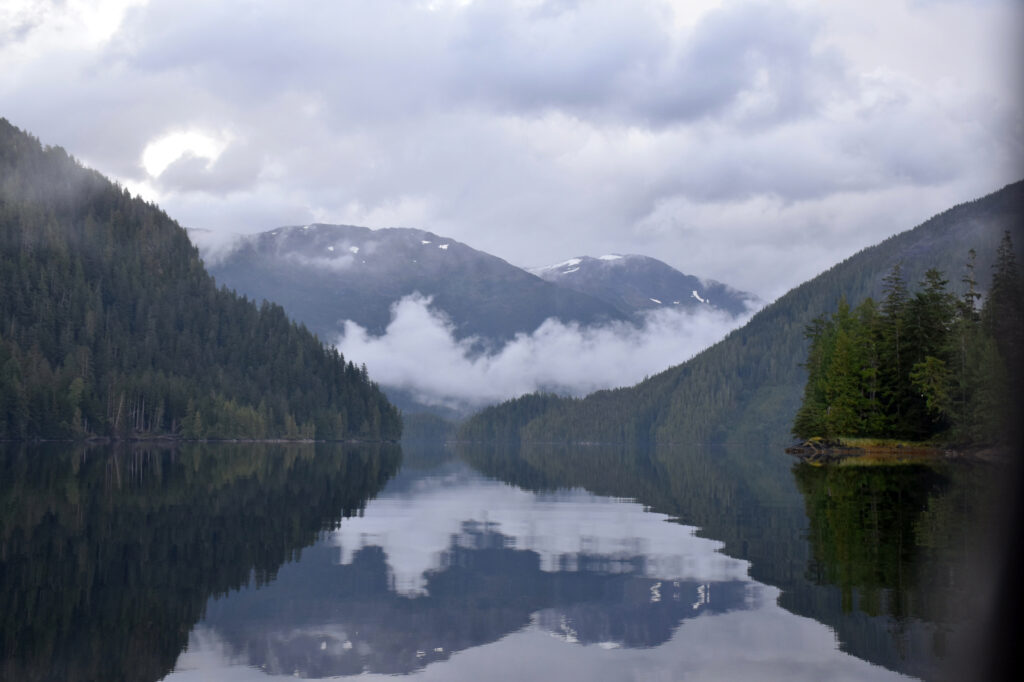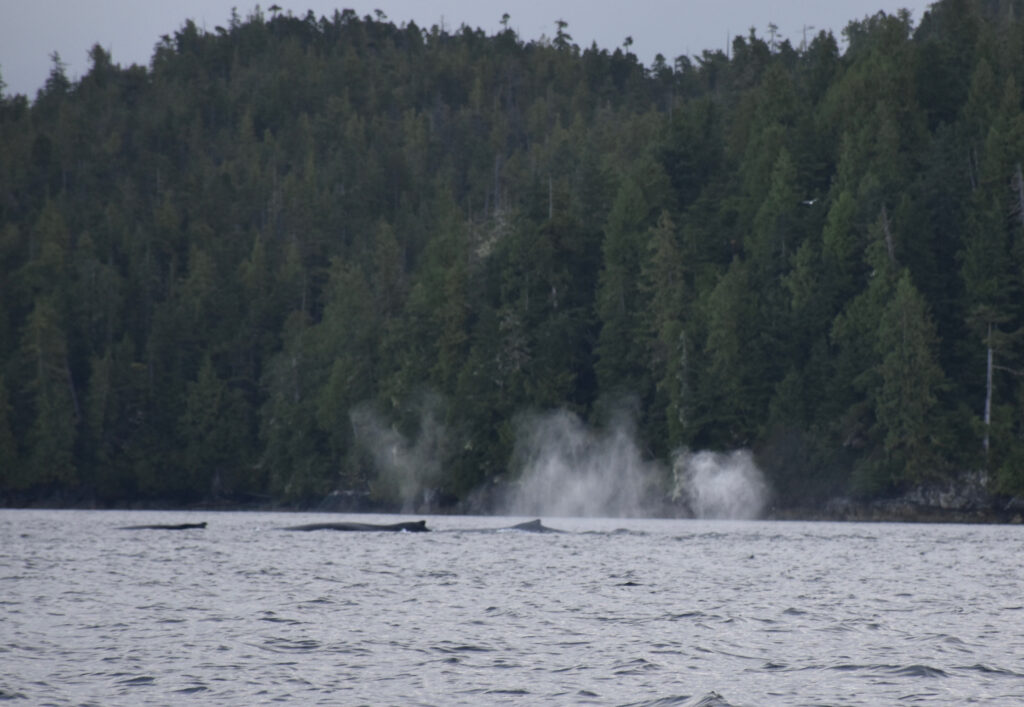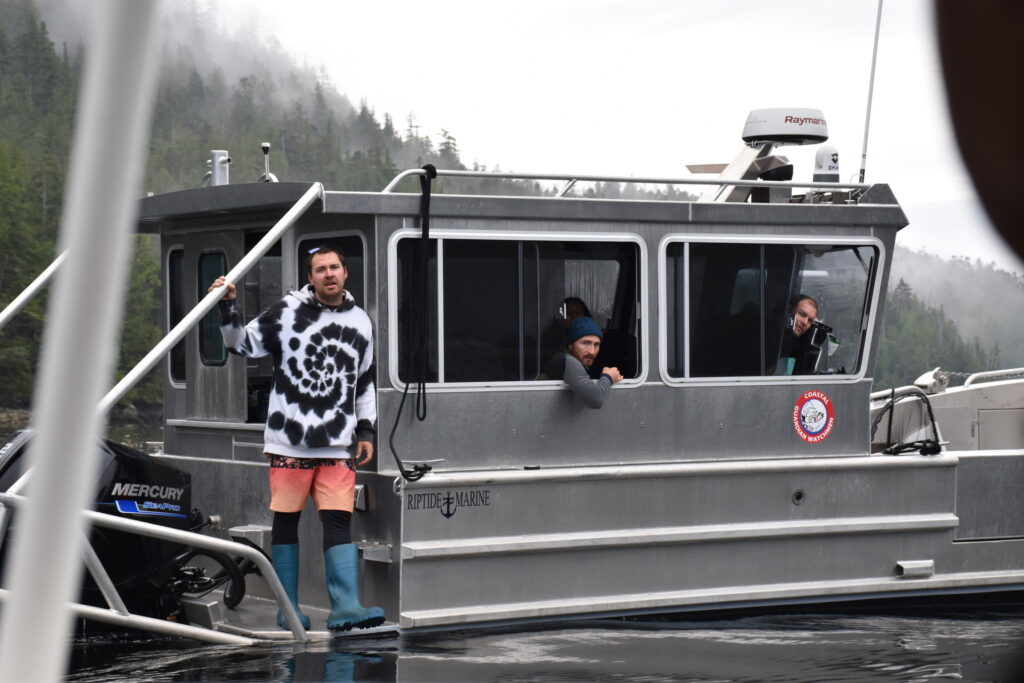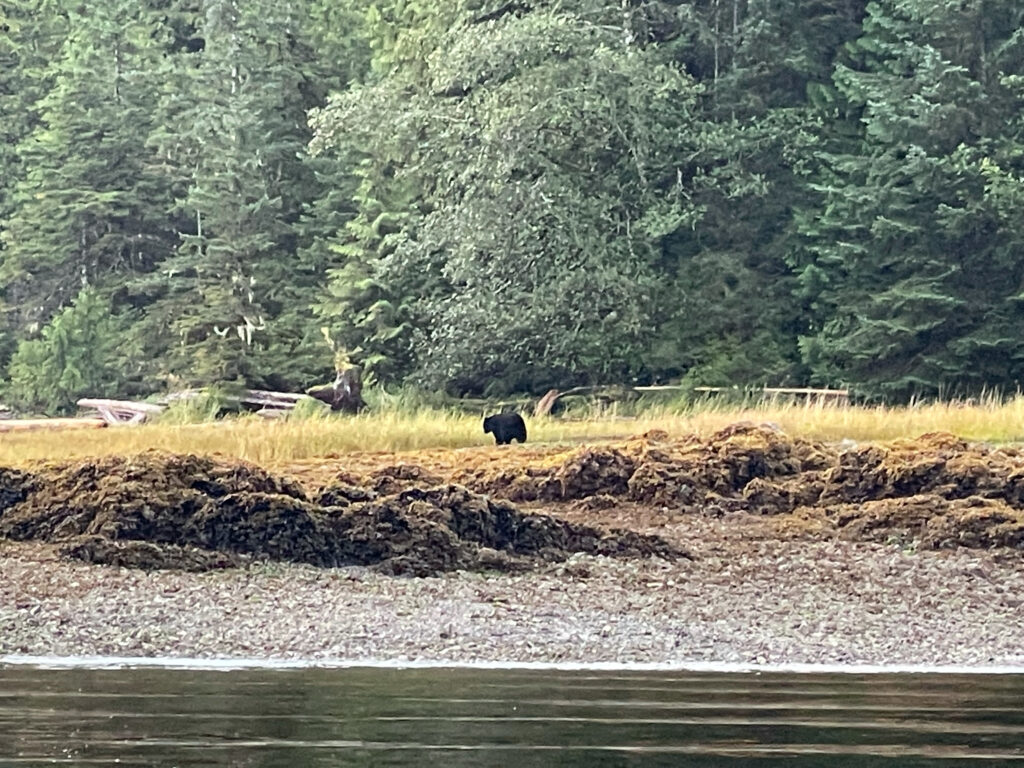In the Great Bear Rainforest
Along the north coast (Bill Ryan)
Cruising British Columbia’s divine coastal waters in a compact motorboat last month, two boomer siblings had a splendid wilderness adventure.
Andy Ryan, from Kenmore, Wash., planned the excursion and captained the Osprey, a sturdy, 22-foot C-Dory. Brother Bill Ryan, a New Yorker, took photos and helped navigate.
Canada opened to Covid-vaccinated foreigners in August, creating a small window for travel to the Great Bear Rainforest before harsh weather set in. A lifelong boater, Andy had taken Osprey in 2019 up the Inside Passage from Washington to Alaska’s Glacier Bay and back, and was keen to revisit the renowned nature preserve. Novice Bill had crewed on an Alaska leg of the earlier voyage and eagerly agreed to come along.
BY BILL RYAN
On Sept. 7, we trailered Osprey across the border, onto a ferry to Vancouver Island and up to Port Hardy before launching into Queen Charlotte Strait. Our first challenge was rounding unprotected Cape Caution, where wind- and current-driven waves mix with Pacific swell in a tricky chop. Stay alert, peer through thick boat-length-visibility fog and watch for floating logs!
Over the next three weeks, we made our way north through picturesque passages between forested islands to Prince Rupert, near Alaska, and back again. At night we anchored in sheltered inlets recommended by prior mariners using the Active Captain app. Mountains with stunning waterfalls ringed some of the anchorages.

Andy (left) and Bill Ryan

Trusty Explorer pulled loaded Osprey and kayaks from Everett, Wash. to Port Hardy, BC, and back. (Bill Ryan)

Waiting for the tide before launching at Port Hardy. (Bill Ryan)

(Bill Ryan)

(Bill Ryan)

(Bill Ryan)
Along the way we spotted more than a dozen humpback whales, their blows visible from far across the water. Some traveled in processions. A few appeared close by; one broached near our starboard side.

A procession of whales (Bill Ryan)
Near Klemtu, tragically, we noticed a mass of seaweed in motion. Approaching, we saw a humpback whale, apparently trying to free itself from a tangle of fishing net and kelp. We circled helplessly as it floundered; there was nothing we could do and we motored north in search of help.
A few miles further up the east coast of Swindle Island, we spotted a Kitasoo/Xai’xais Guardian Watchmen boat. Pulling alongside, we reported the trapped marine mammal and its location. The young Watchmen seemed to believe there was a good chance of saving the whale, and sped off to the rescue. Andy has attempted to find out what became of the hapless cetacean, but thus far has not been able to connect with the Guardian Watchmen. He will keep trying. Bill shot video of the whale, and it is awful to watch. But we don’t see any good reason to sanitize our account. The video is posted here.

Whale tangled in rope and kelp (from video).

Coastal Guardian Watchmen, First Nations environmental protectors (Bill Ryan)
We only ventured ashore a few times in the Great Bear Rainforest, and always at places with docks. The shores were rocky and slippery, and there weren’t many good places to land. The pristine area, now mostly protected from logging, is home to white “spirit bears,” a subspecies of the American black bear, revered by local native people. We did not see any, but did sight one of their black bear cousins on a beach as we motored by.
During a normal summer, these waterways would be thick with pleasure boats and cruise ships. But this year, post-season, we rarely saw another boat—an occasional tug pulling an enormous barge or a big BC Ferries ship. We had days of wooded solitude between far-apart fuel stops.

Bill at the helm (Andy Ryan)

Sighting a black bear (Ursus Americanus) on the north shoreline of Hunter Island (Bill Ryan)

B.C. ferry in the distance (Bill Ryan)

Getting a little too close for comfort (Bill Ryan)
Sadly, due to Covid, Klemtu, Bella Bella and other First Nations communities on our route were closed to visitors. But we spent several days at the welcoming Shearwater Resort, newly aquired and managed by the Heitsuk Nation, while we waited for a strong gale to pass.
With Klemtu closed and our gas running low, it looked as though our trip might be cut short; fortunately, the fuel dock at the village of Hartley Bay—a two-day trip, 66 nautical miles north of Klemtu—was open for business. With our gas tanks now full, we headed up gorgeous Grenville Channel—waterfalls on each side for 45 miles—and on to Prince Rupert, the farthest north city on the B.C, coast.
We were now just 24 miles from the Alaska border … but Prince Rupert was the end of the line for us. Summer was but a memory on the north coast. The wet, windy season had set in, with one low pressure system rolling in after another, and we decided not to risk a crossing of notoriously rough Dixon Entrance, with Ketchikan just a few more hours to the north. Instead, we hunkered down in driving rain for a couple of days, rocking gently in a slip at the Prince Rupert Rowing and Yacht Club. (Hot showers and a laundromat! Sweet!) Then we headed back south.
We had planned on gassing up again at Hartley Bay, but—oops!—the fuel dock was closed that day. We reduced our speed to save gas (Osprey doesn’t have tremendous range) and crept south. After two nervous days we made it back to Shearwater … on fumes … just in time for another powerful storm that kept us pinned to the dock for two days.
On our way south from Shearwater, we made a stop at the Hakai Institute on Calvert Island, where scientists study the ocean’s DNA and carbon levels. From there, we stretched our legs and walked to a gorgeous beach.

Bill at Hakai beach (Andy Ryan)

View from Hakai Beach (Andy Ryan)

Rock formation at Hakai Institute beach (Andy Ryan)

English garden at Hakai Institute (Andy Ryan)
OK, let’s wrap this tale up in one paragraph.
Another big weather system was closing in, and we took advantage of a momentary calm and dashed back across Queen Charlotte Sound at 20 knots to Port Hardy, pulled Osprey out of the water and began the long drive home.
And then there was that surreal late night incident at a decrepit motel in Nanaimo, where a scary tweaker threatened us, convincingly, with a homemade sword he’d had hidden under his coat. But that’s another story.

Vancouver Island and the Great Bear Rainforest (Navionics)

Track of the Osprey, September 2021 (captured by Garmin inReach device)

Log of the Osprey
